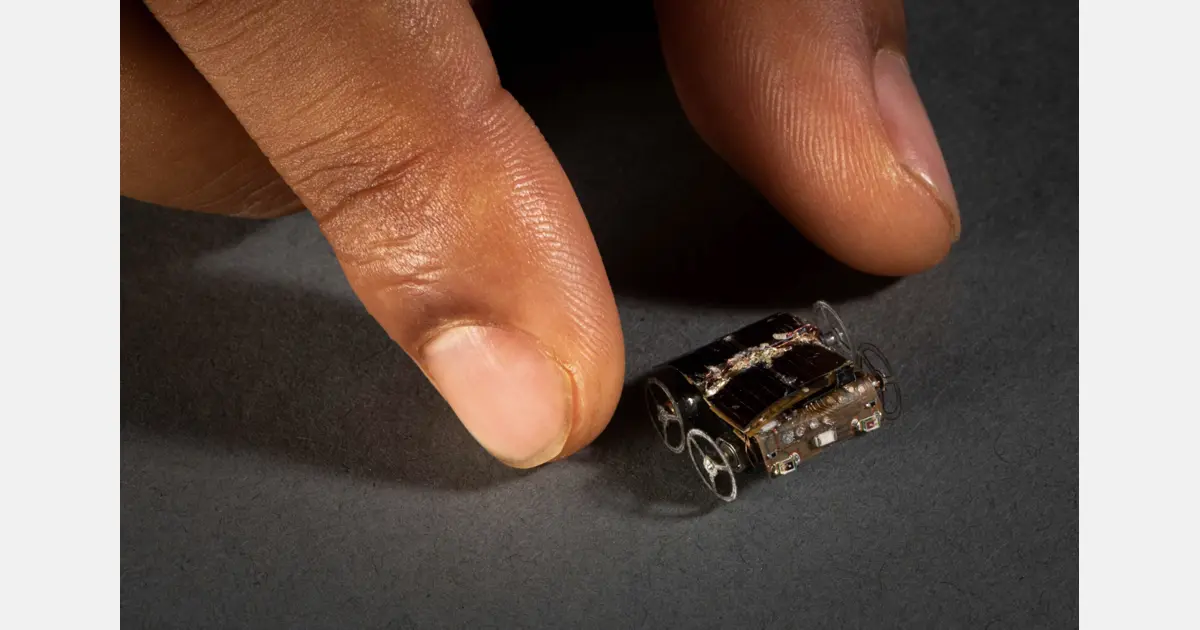That is the worst site I’ve seen in a long time. Do yourself a favor and add
www.verticalfarmdaily.com###zijkant www.verticalfarmdaily.com###banners_zijkantto your uBlock rules before following the link. If you don’t have a way to block elements, may $diety have mercy on your soul.
Reader mode is another option - it worked for me, at least. (On mobile with Adguard running.)
For anyone too annoyed with their site to read the article there:
Researchers at the University of Washington have now created MilliMobile, a tiny, self-driving robot powered only by surrounding light or radio waves. Equipped with a solar panel–like energy harvester and four wheels, MilliMobile is about the size of a penny, weighs as much as a raisin, and can move about the length of a bus (30 feet or 10 meters) in an hour, even on a cloudy day. The robot can drive on surfaces such as concrete or packed soil and carry nearly three times its own weight in equipment like a camera or sensors. It uses a light sensor to move automatically toward light sources so it can run indefinitely on harvested power.

The team tested MilliMobile, both indoors and outdoors, in environments such as parks, an indoor hydroponic farm, and an office. Even in very low light situations — for instance, powered only by the lights under a kitchen counter — the robots are still able to inch along, though much slower. Running continuously, even at that pace, opens new abilities for a swarm of robots deployed in areas where other sensors have trouble generating nuanced data.
“We took inspiration from ‘intermittent computing,’ which breaks complex programs into small steps, so a device with very limited power can work incrementally, as energy is available,” said co-lead author Kyle Johnson, a UW doctoral student in the Paul G. Allen School of Computer Science & Engineering. “With MilliMobile, we applied this concept to motion. We reduced the robot’s size and weight, so it takes only a small amount of energy to move. And, similar to an animal taking steps, our robot moves in discrete increments, using small pulses of energy to turn its wheels.”
These robots are also able to steer themselves, navigating with onboard sensors and tiny computing chips. To demonstrate this, the team programmed the robots to use their onboard light sensors to move towards a light source.
Researchers have outfitted MilliMobile with light, temperature, and humidity sensors as well as with Bluetooth, letting it transmit data over 650 feet (200 meters). In the future, they plan to add other sensors and improve data-sharing among swarms of these robots.
It’s shwetek patels group at Univ. Washington. They’ve had some interesting stuff in the past, and are good at the PR part of things.
This is dope af. But it won’t be long before these get put to nefarious use.
Like my old Micro Machines track…
What you did with those ?





